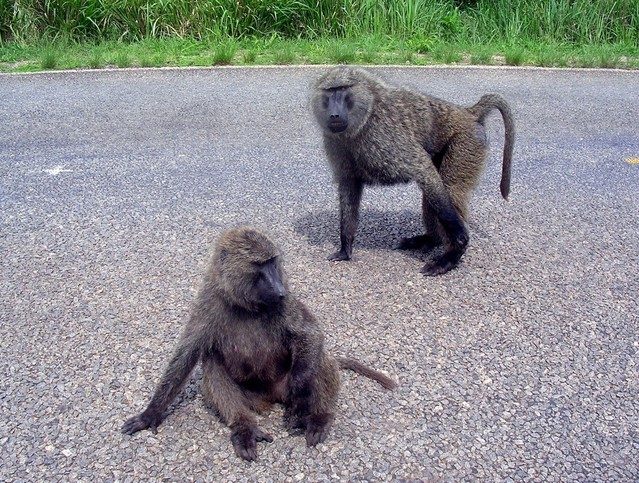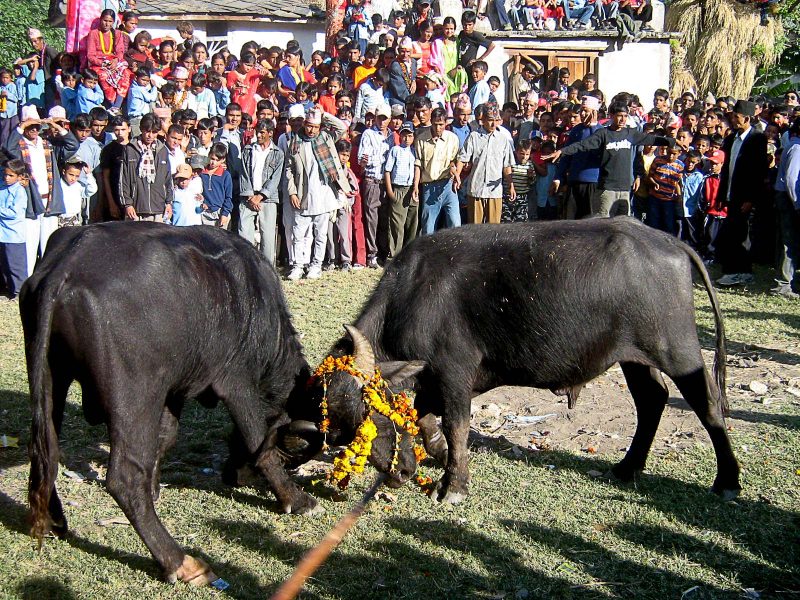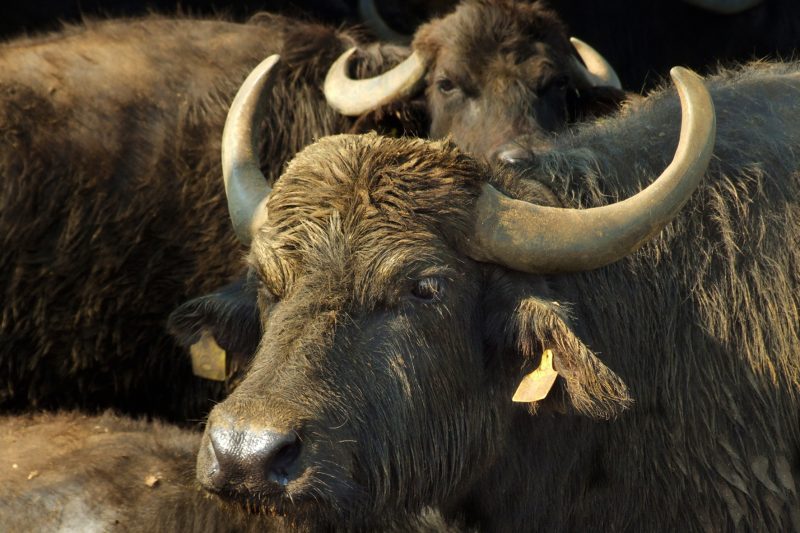Wildlife Of Kenya That Is Unknown
Species of baboon
There are five species of baboon which are guinea baboon, olive baboon, yellow baboon, chacma baboon and hamadryas baboon. They dwell in a variety of habitats throughout Kenya. The baboon is a common species of the old-world monkey.
The vervet monkey
There are five known subspecies of the vervet monkey. All of them have unique appearances, which help them set apart from other types of monkeys. A black face with white edges is how the vervet monkey is different from others. The body is a shade of gray. Males can weigh an average of 12 pounds and up to a maximum of 18 pounds and are over a foot and a half long. Females can weigh an average of 9 pounds and up to a maximum of 12 pounds and are usually over a foot long. The vervet monkeys occur along the savannas, the rivers, the mountains, and even the woodlands. They do adapt well in several terrains and live in cultivated areas too. They spend most of their time in the trees. But sometimes they do come down to the ground to find food. The vervet monkey is active both during the night and day. They are social animals, and the groups can contain as many as 40 individuals. They have a pecking order that helps with the social structure. The young are encouraged to use a variety of calls from a very early age.
The common eland
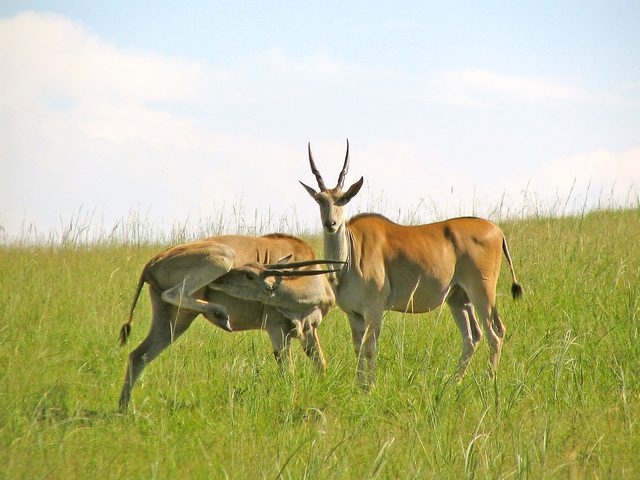
Wildlife of Kenya that is unknown
The most striking feature of common elands is their massive size. Both female and male common elands have a pendulous dewlap and spiraled horns. Males develop a black crest of hair on their foreheads. The common eland is associated with woodland, although they are flexible in their habitat preferences. Their population, in general, seems stable. Around half of them are in protected areas and another third on private ranches.
The timid bushbuck
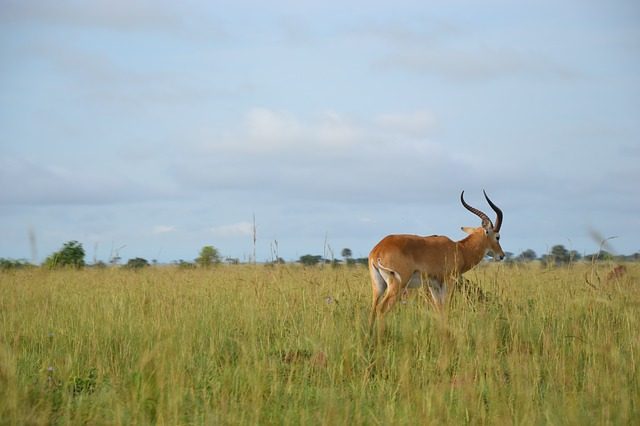
Wildlife
The distribution range of the elusive and shy bushbuck in Kenya is extensive. There are 50 varieties of them. It occurs in several habitats. The coat patterns and colors are different individually and regionally. The ones living in deep forest have darker color coats. All varieties and both females and males have geometrically shaped white spots or patches on the body’s most mobile parts such as the ears, chin, legs, tail and neck, and a band of white underneath the collar. Males make the spots more visible when they arch their backs and circle one another in a high-stepping tensed gait.
The Thomson’s gazelle
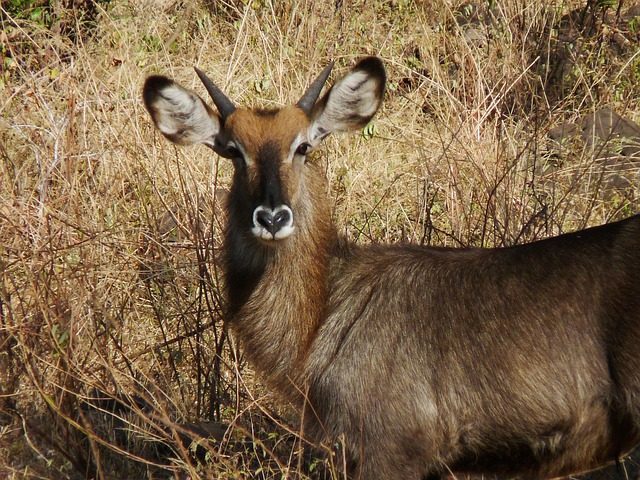
Gazelle
A variety of stripes and markings accentuate the white rumps and tan buff coats of Thomson’s gazelle. These are antelopes found in Kenya. They are graceful and beautiful animals. These grazing antelopes live in groups, which can consist of ten or as many as a hundred animals. During the rainy season, thousands of them can be seen gathering in huge crowds. Gazelles frequent wide-open plains and spaces, where they browse on shoots, leaves and grasses. Open plains make them conspicuous to predators like wild dogs or cheetahs, but gazelles can run at a speed of 50 miles an hour. Some species eschew the grasslands for mountains or even deserts. During the summer, some grassland gazelles go to the bush in search of water.
Operations of gerenuk
Unlike most other gazelles, the gerenuk is not a sociable animal. It is also known as Waller’s gazelle. It is an elusive animal whose first line of defense is to avoid detection while standing erect in concealment. When alarmed, a gerenuk more often trots than gallops away. Females are known to act like young while hiding.
Open habitat preference
The longest-necked of the gazelle tribe, the gerenuk, is a browsing antelope of the dry thorn bush of Kenya. Degradation of grassland brought on by overgrazing by domestic livestock and drought has caused the thorn bush to expand. This expansion creates more habitat for the animal and compensates for clearing, overhunting and cultivation in other parts. It prefers well-spaced trees and bushes and avoids dense forest with no passage. This behavior is consistent with its low population density, and semi-closed habitat preference. Males cordon off a smaller area by depositing secretions on twigs at intervals from their preorbital glands. Female ranges are of comparable extent. Although these animals have been known to shift their range, territorial males very rarely venture off their property.
Fluid herd mentality
Sightings of lone animals are typical. Two or three females may sometimes form together who will associate them with males in twos before they become territorial. Herds of eight are considered standard at high densities, while a flock of twelve are unusual. However, groupings are fluid, the only association being between dependent offspring and the mother. Most births occur during the rains. But the gerenuk breeds all year-round as mothers conceive again within weeks of delivery. Gestation is seven months, and the calves remain hidden for several weeks.
Features of the body
The gerenuk’s shoulder height is 105 cm. The animal weighs 52 kg. It has a two-tone coloration. Its underparts, tail, rump patch, throat patch, chin, lips, eye rings, and the insides of the large ears are all white. Only the males have horns. They are S-shaped, annulated, and 45 cm long.
Adapted bodily features
The pointed snout and the elongated neck and limbs of the gerenuk are apt for their way of selective nibbling of the leaves of thorny trees and shrubs, including foliage that is very high for other antelopes. The gerenuks reach them by standing on its back legs. Its lumbar vertebrae, wedge-shaped hooves, and powerful hind legs make them the only antelope that can stay in this manner. Thus, the gerenuk can exploit resources inaccessible to other herbivores who are water-dependent. Indeed, its population can increase with distance from water.
Frequently Asked Questions About The Wildlife of Kenya that is unknown
To receive a colourful digibook about animals with videos, images and text, please fill out the following form or simply email us on safaris@safari-center.com

